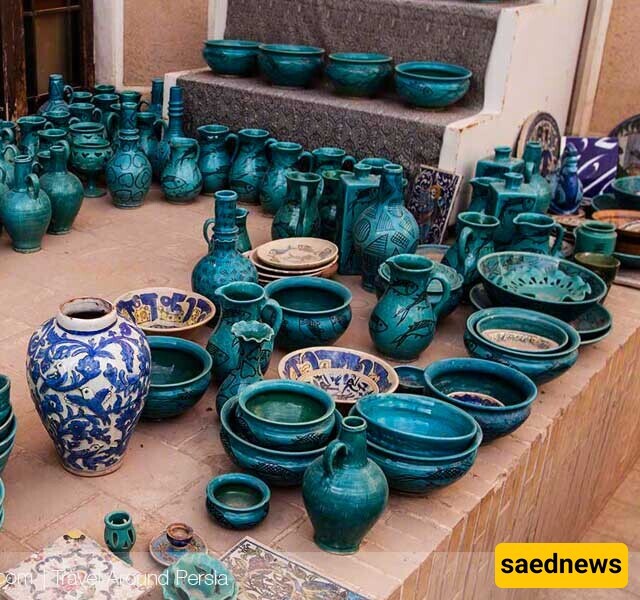SAEDNEWS: The art of pottery in Iran, dating back to 8000 B.C., showcases the rich history and creativity of Iranian culture, blending ancient techniques and modern influences.

According to SAEDNEWS, Pottery in Iran is not just an art form; it represents one of the oldest and most significant inventions of humankind. With its origins tracing back to 8000 B.C., Iranian pottery has played a crucial role in revealing insights about society, art, and technology throughout history. Over the millennia, Iranian artisans have utilized various tools, methods, and decorative motifs in their pottery creations.

Due to its strategic location at the crossroads of ancient civilizations, Iran has seen the flourishing of pottery across different regions. Influential civilizations such as Marlik, Sialk, Susa, and the “Burnt City” have contributed to the rich heritage of Iranian pottery. For instance, pottery from the Marlik Civilization (728-330 B.C.) and the Susa Civilization (3800-3100 B.C.) showcases beautiful abstract motifs, including animals like goats and storks, as well as intricate geometric designs symbolizing elements like the sun and agricultural land.
The Achaemenid period introduced significant pottery pieces, including statuettes of bulls, highlighting the animal's cultural importance in ancient Iranian folklore. During the Sassanid Empire, pottery artisans began glazing their wares in captivating green and blue hues, enhancing both beauty and functionality.

The Islamic era was a turning point for Iranian pottery, which saw a revival of its traditions. The Samanid Period, in particular, marked a resurgence of pottery craftsmanship, which continued to evolve under the influence of Islamic and Chinese art during the ensuing dynasties—Seljuk, Ilkhanid, and Timurid. The pinnacle of Iranian pottery craftsmanship was reached during the Safavid Dynasty, where potters created artistic vessels adorned with exquisite patterns and professional glazes.

Today, pottery remains a vibrant part of Iranian culture, with cities like Lalejin near Hamadan and Meybod in Yazd at the forefront. Lalejin, often hailed as the Middle East's pottery hub, boasts a population where 80 percent are involved in pottery and ceramics. Here, artisans create stunning pieces featuring colorful glazes. In Meybod, potters produce unique wares decorated with charming motifs of fish, birds, and faces known as “Khorshid Khanom.”
In the lesser-known city of Kalporagan in Sistan and Baluchestan, local women craft vessels without using a pottery wheel, relying instead on traditional designs etched into reddish clay. This blend of modern and ancient techniques keeps the art of pottery alive and thriving.

Visiting pottery workshops in Iran is a remarkable experience. Travelers can learn and try their hand at creating pottery just as artisans have done for thousands of years. Whether one admires the delicate craftsmanship or engages in the process, it provides a deep appreciation for this timeless art form.
Iranian pottery is not only a testament to the technical skills of its creators but also a glimpse into the rich history and culture of Iran. As noted by R. Ghirshman, “The taste and talent of this people can be seen through the designs of their earthen wares.” The evolution of this craft—from ancient times to contemporary artistry—remains a significant part of Iran's cultural heritage, captivating both locals and visitors alike.

